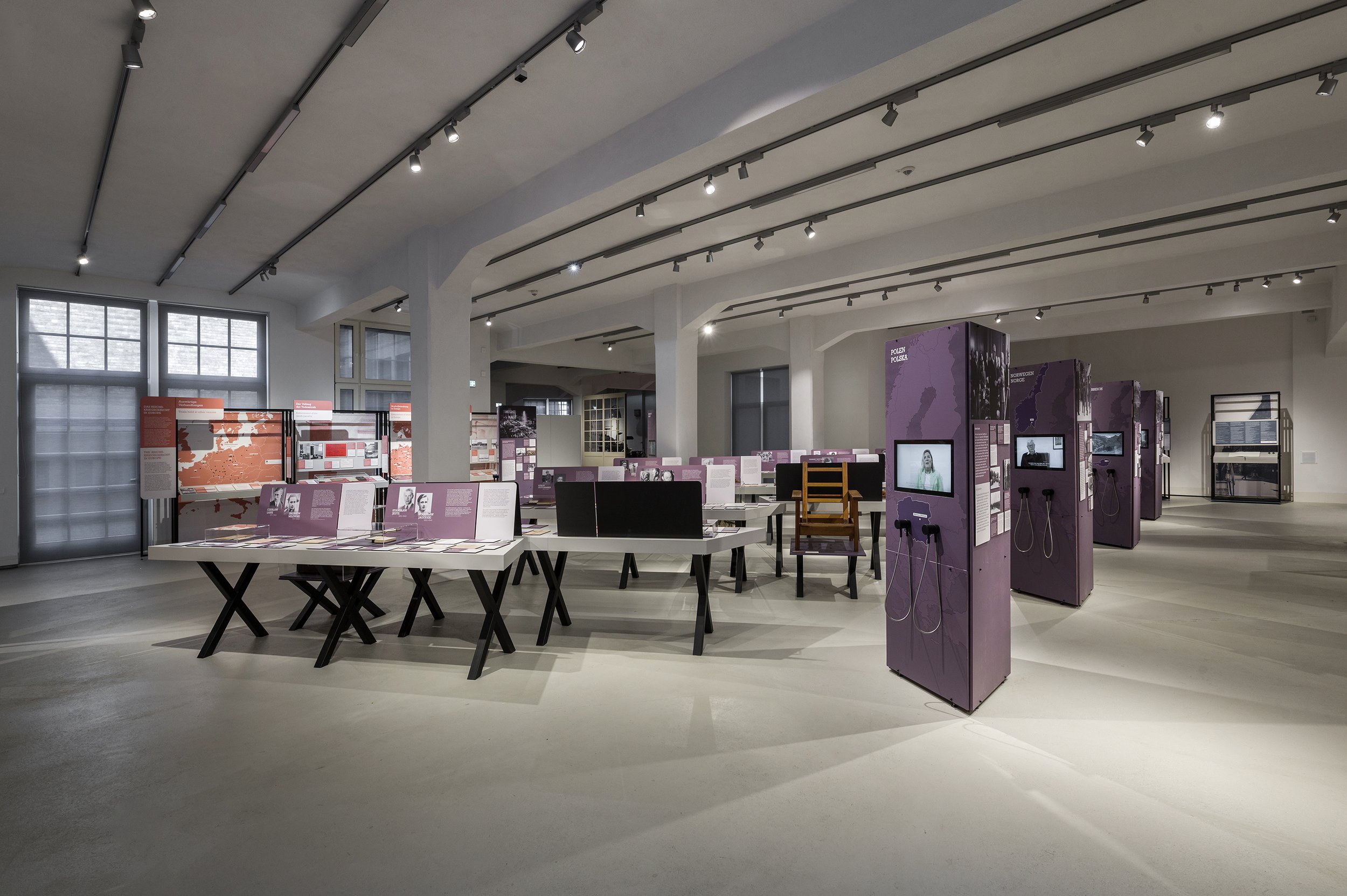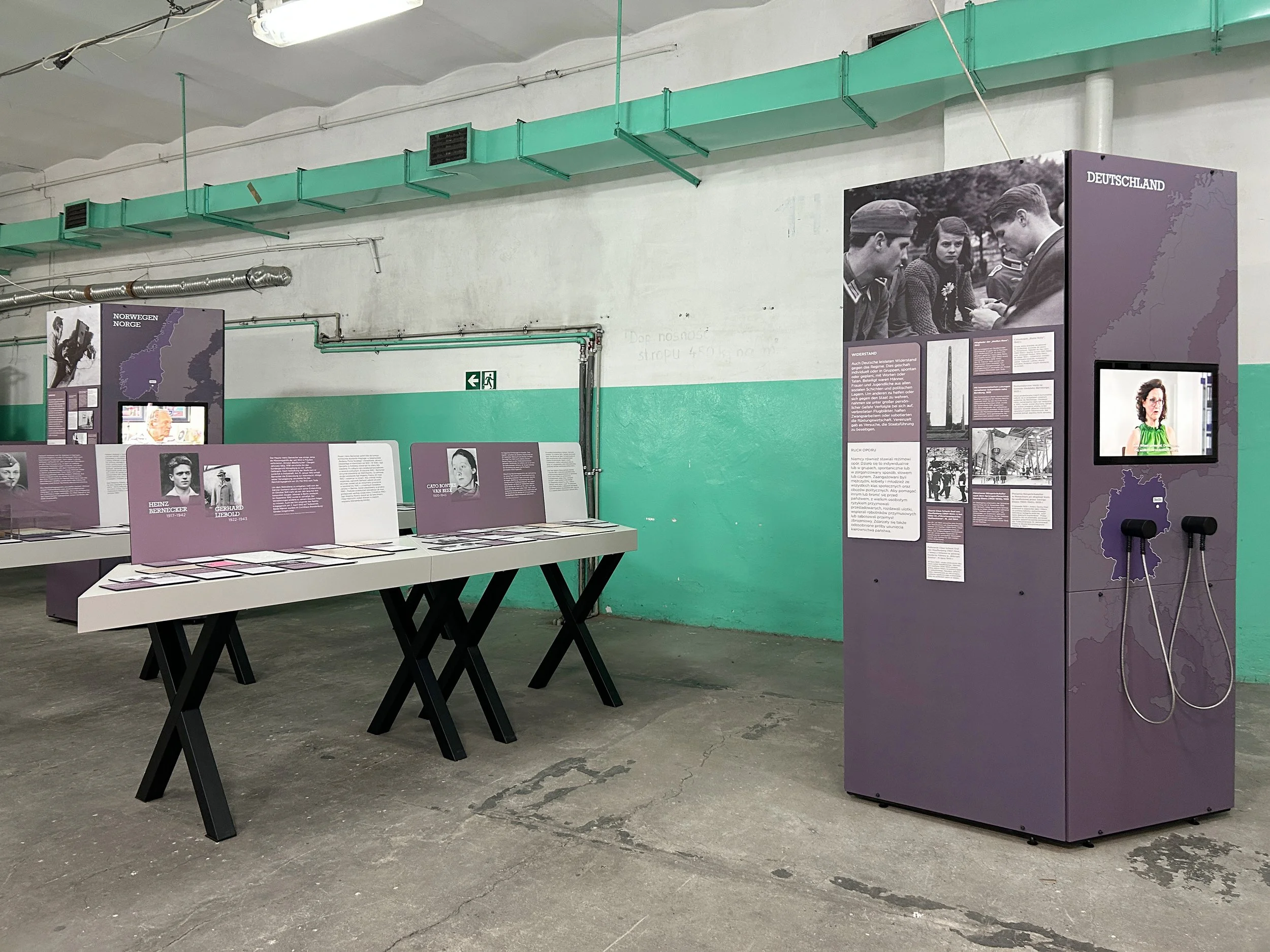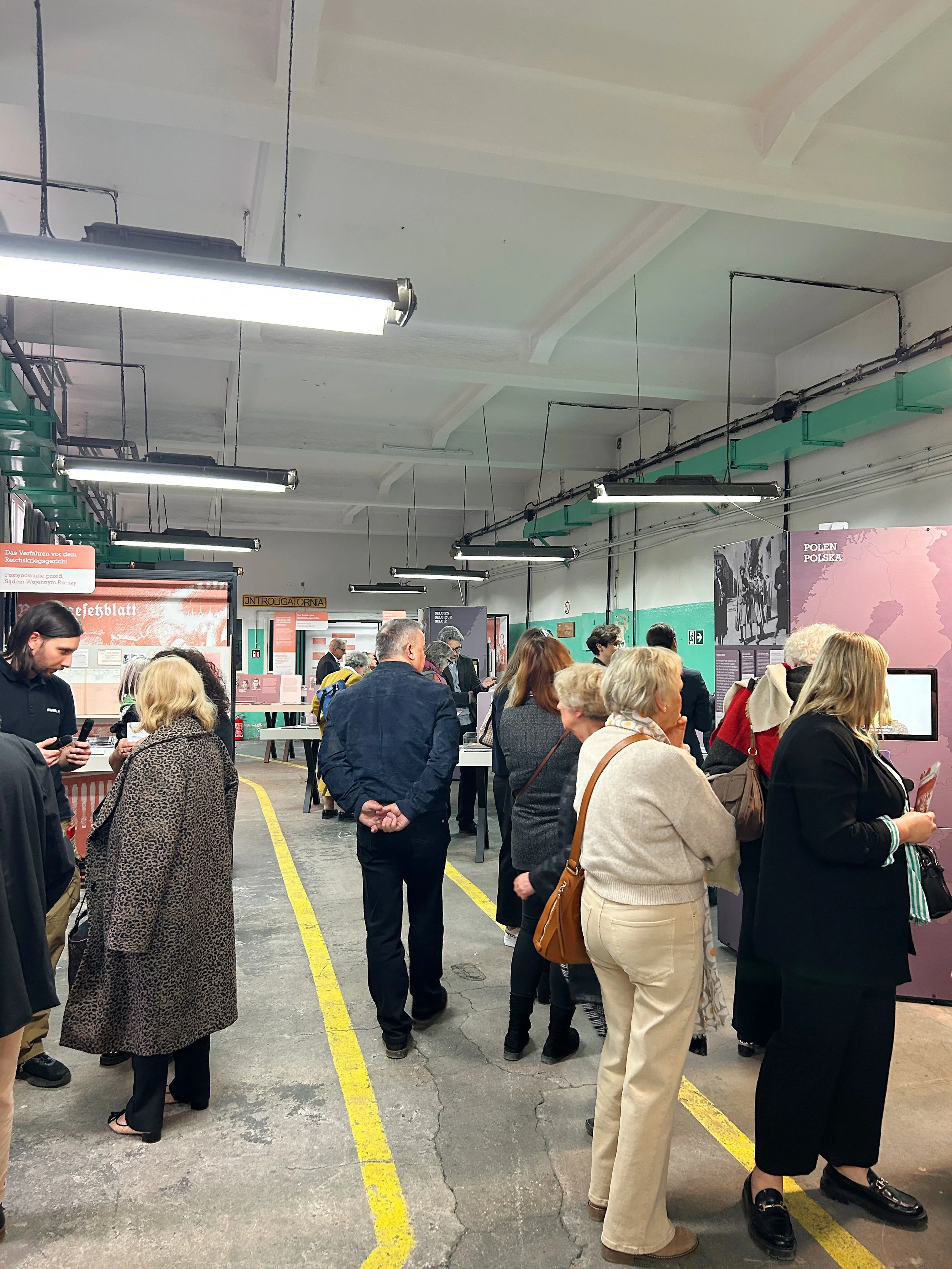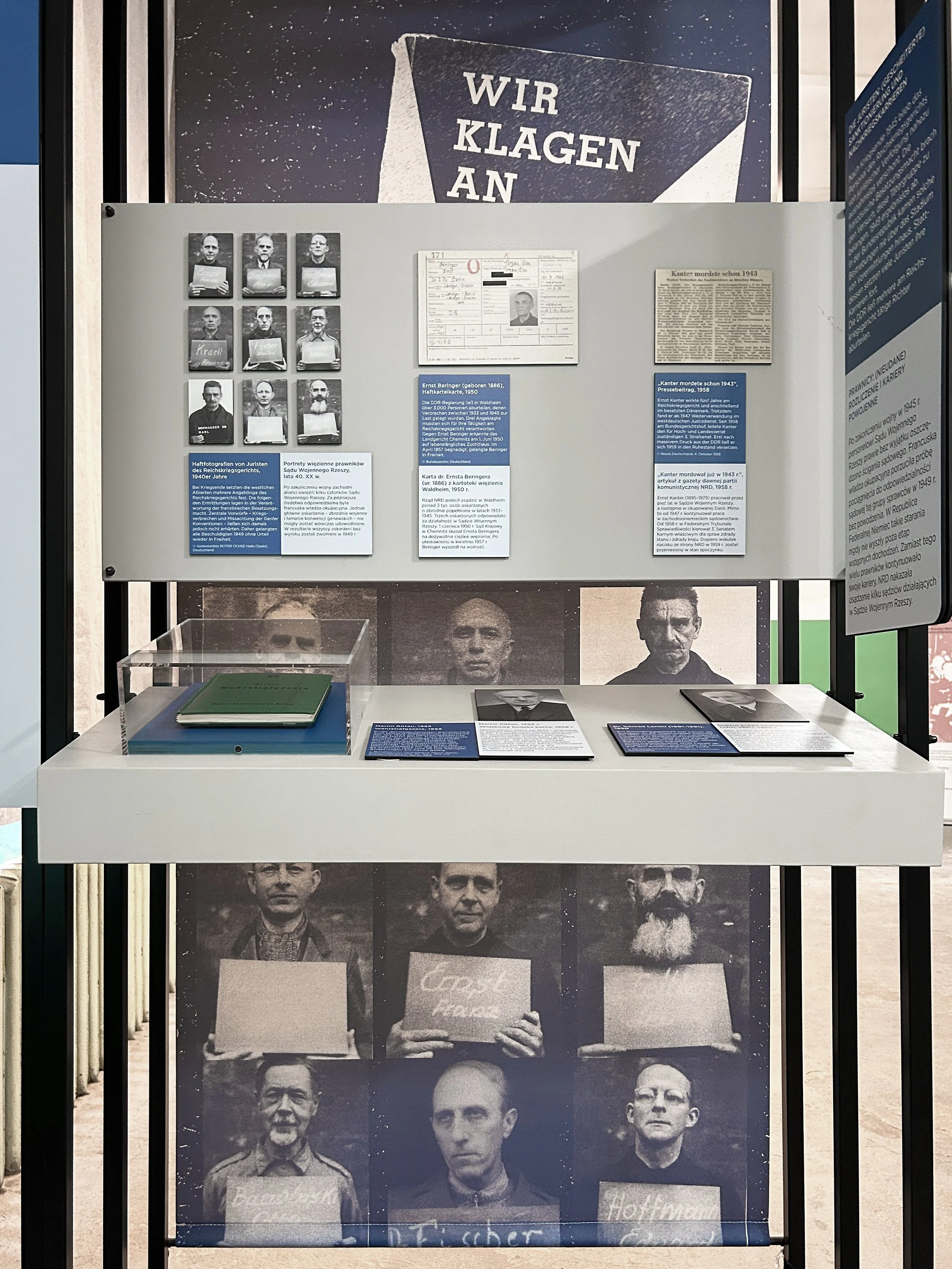„The Reichskriegsgericht 1936 to 1945“
„The Reichskriegsgericht 1936 to 1945“
A travelling exhibition remembering National Socialist military justice and the suppression of resistance in Europe
COORDINATION developed a modular, visitor-centred scenography for the European travelling exhibition ́The Reichkriegsgericht 1936-1945‘, which can be adapted flexibly to different spaces. The exhibition deals with Nazi military justice, resistance during the Second World War historical reappraisal and remembrance after 1945.
Read more
Our office was responsible for all aspects of the exhibition, from design to transport logistics. The exhibition is accessible, multilingual and consists of 23 wall modules, 19 biographical tables and multimedia stations. It will be touring to six European countries. With the design and realisation of the travelling exhibition ‚The Reichskriegsgericht 1936 - 1945‘, COORDINATION once again demonstrates more than 20 years of expertise in the sensitive design of contemporary historic exhibitions.
For the design and realisation of the exhibition, COORDINATION spent three years intensively immersed in the complex and still little-known topic in order to create a visitor-centred scenography that can be adapted to different spatial situations in a modular way. The result is a kind of „mobile memorial“ that, after its opening in Halle (Saale) on 29 August 2024, will tour to six European cities, first Paris, Warsaw and Berlin and then to other cities in the partner countries (Belgium, France, Norway, Poland and the Czech Republic).
In cooperation with the museum team of the ́Roter Ochse ́ in Halle (Saale), COORDINATION was responsible for all areas of the travelling exhibition: scenography, exhibition architecture, exhibition graphics, interactive media stations, display vitrines and object installation as well as transport logistics. COORDINATION also designed and produced all advertising materials such as posters, invitation cards, digital banners and brochures.
The exhibition is divided into three sections: the history of justice by the highest military court during the Nazi era, the resistance during the Second World War and historical reappraisal and remembrance from the end of the war to the present day. The victims from Germany and the occupied countries are at the centre of the exhibition. The prologue introduces the complex subject of the ́Reichskriegsgericht ́, while the epilogue deals with the reappraisal of Nazi justice from 1945 to the present day. The overarching theme for the design of these sections is the ‚corset of Nazi justice‘. A system of metal structures frames all the content relating to Nazi military justice and the ́Reichskriesgericht ́, symbolising the dictatorial presence of National Socialism, which surrounded the resisting people on all sides. At the heart of the exhibition are the victims and those convicted for resisting the Nazi system in six European countries. The more than 3,700 prisoners, about a third of whom were sentenced to death and more than 1000 executed, are represented by exemplary biographical life stories. The table elements in this area are positioned diagonally in the room, dynamically juxtaposing with the rigid wall modules.
COORDINATION used three colours to structure the exhibition architecture: orange-red, derived from Nazi red and legal file covers, is the main colour for the history of justice from 1936 to 1945, while all the modules on resistance in Germany and the occupied countries are in a shade of mauve. The history of reappraisal and remembrance is in stone blue, derived from today‘s European colour. The interactive, multimedia travelling exhibition must be adaptable to different spatial situations. COORDINATION has therefore designed the exhibition in such a way that the various modules can be dismantled and optimised for a frequent rhythm of assembly, disassembly, storage and transport. In addition to the informative panels, the complex topics are conveyed by means of authentic objects. The travelling exhibition can be adapted and displayed in spaces from 200 to 400 square metres. It consists of 23 wall modules, 19 biographical tables, 6 pylons, 10 media stations and 20 showcases with around 30 original exhibits.
The exhibition is barrier-free, multilingual and easily accessible. It is based on twenty years of research by the ́Roter Ochse ́ Memorial Centre in Halle (Saale) in cooperation with partner institutions in five European countries. More than 100 contemporary witnesses and relatives across Europe have been interviewed and are now able to tell the story of the victims for the first time.
Facts
| client | Gedenkstätte ROTER OCHSE Halle (Saale) / Stiftung Gedenkstätten Sachsen-Anhalt |
| assignment | design concept, planning and realisation of the travelling exhibition |
| design concept | Jochen Gringmuth, Danielle Gringmuth, Andrea Dunmore |
| project management | Jochen Gringmuth |
| graphics and media design | Danielle Gringmuth |
| team | Andrea Dunmore, Mirjam Schwab, Saskia Dall Armi, Michelle Heising |
| media planning and production | Molitor GmbH, Christian Coers |
| head curators | Lars Skowronski, Michael Viebig |
| photo credits | Marcus-Andreas Mohr, Coordination |

















